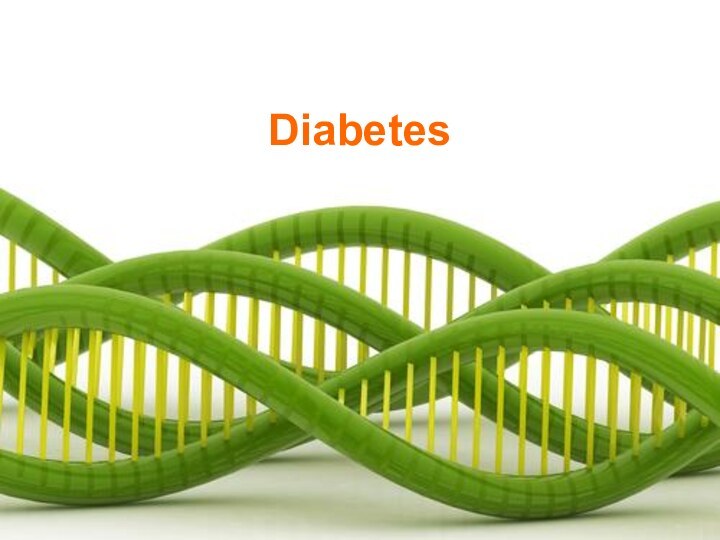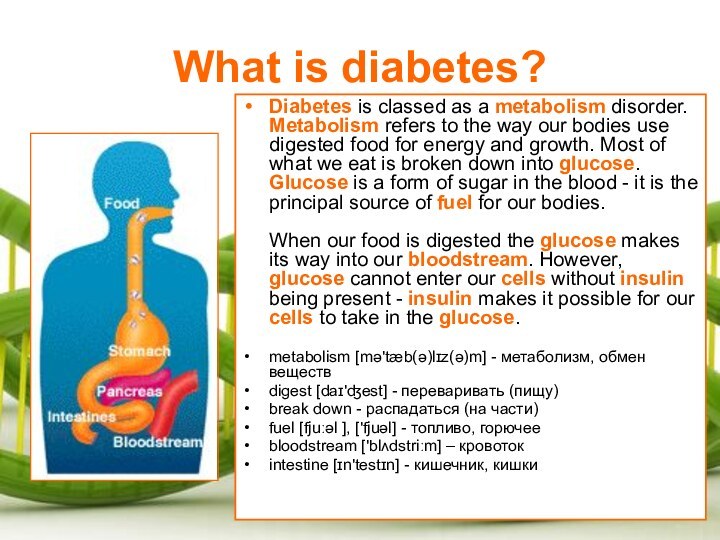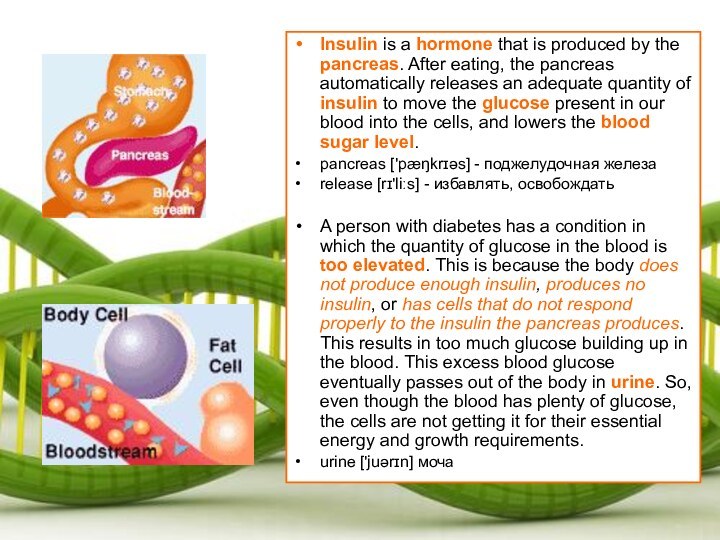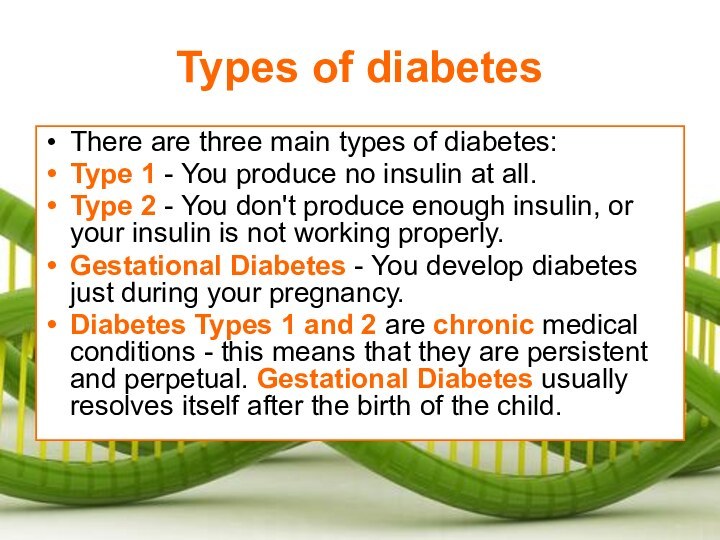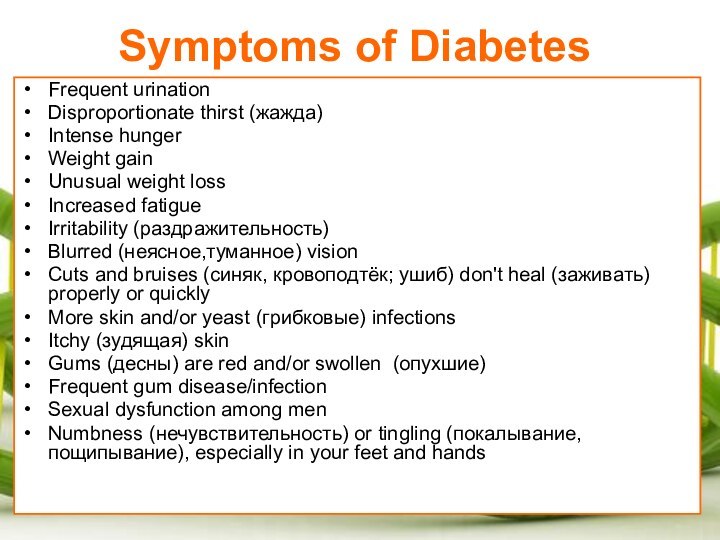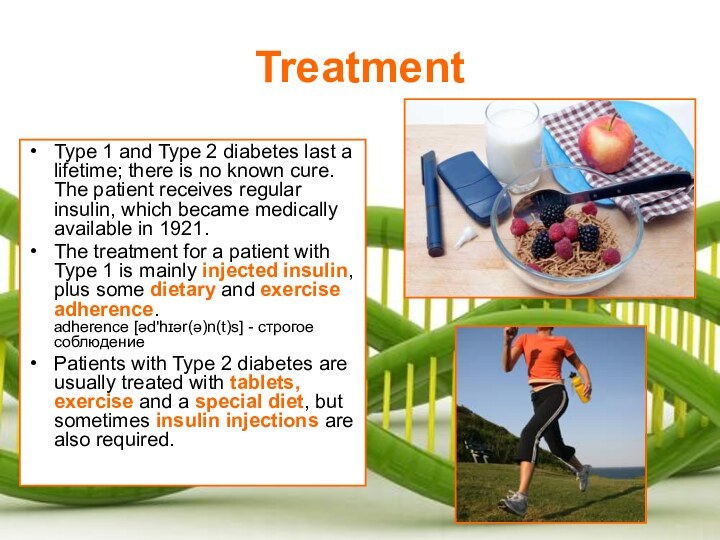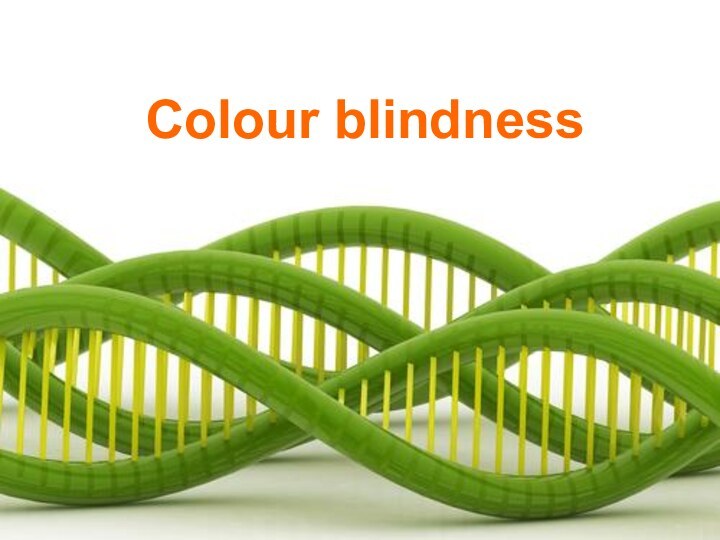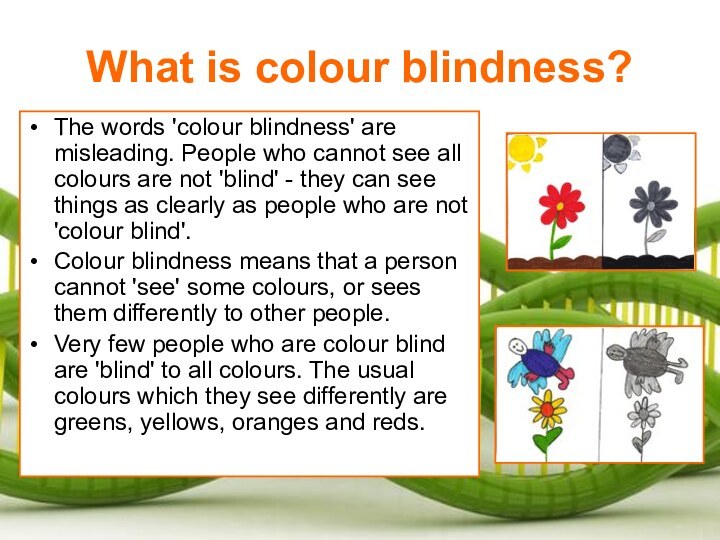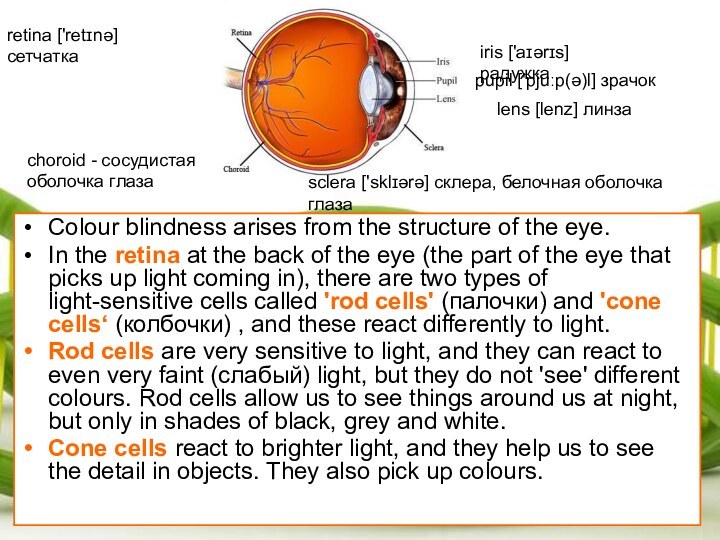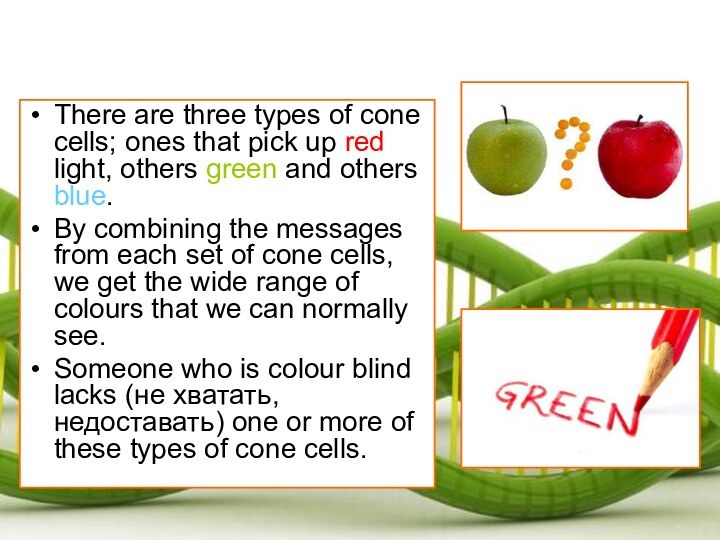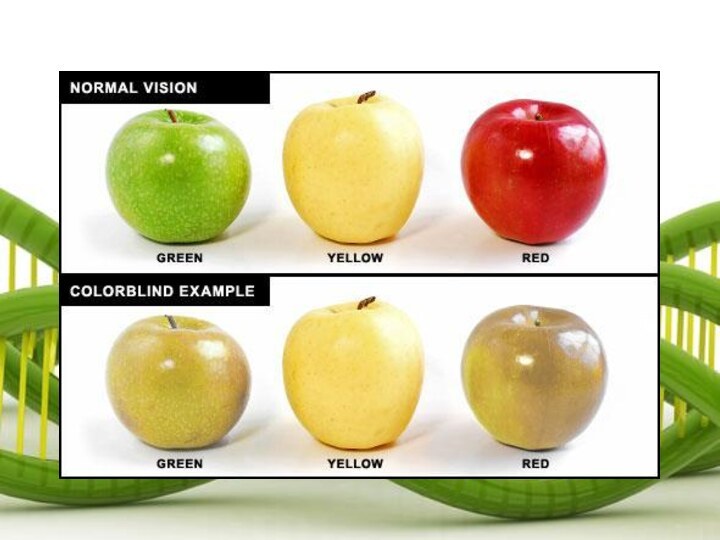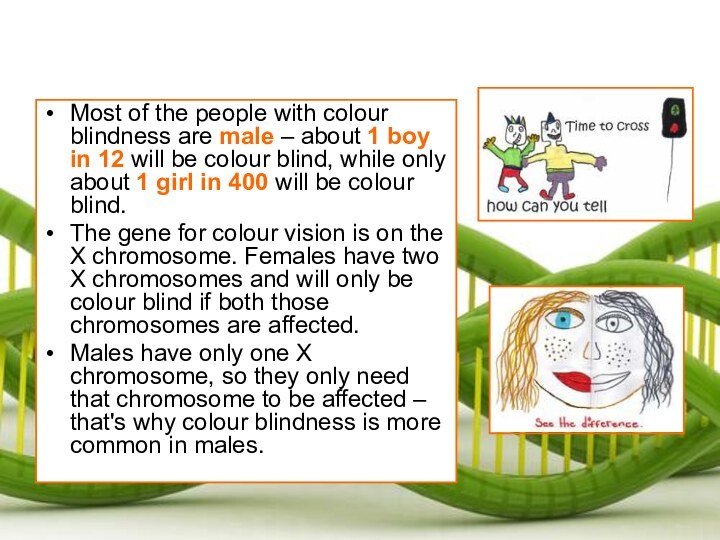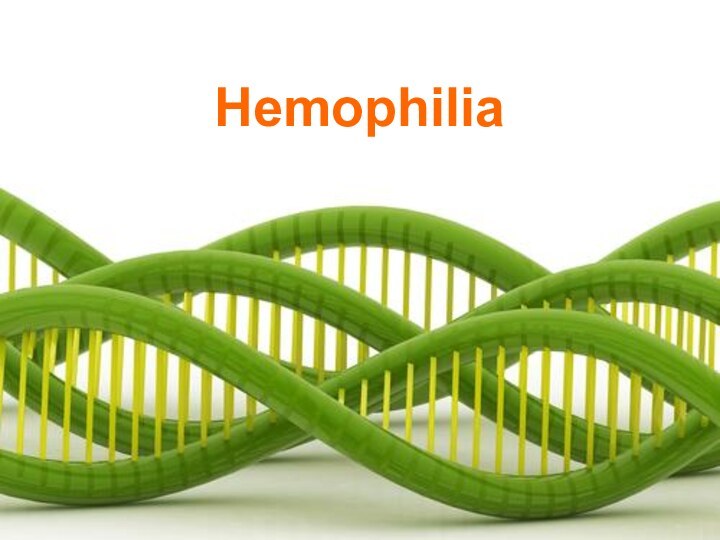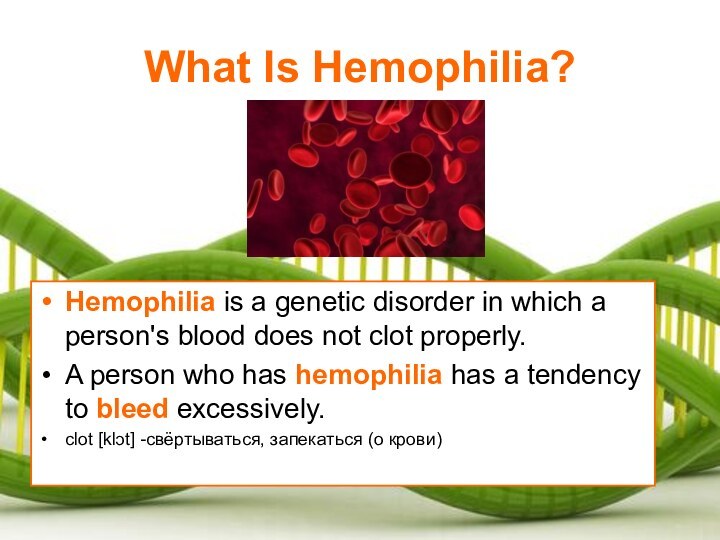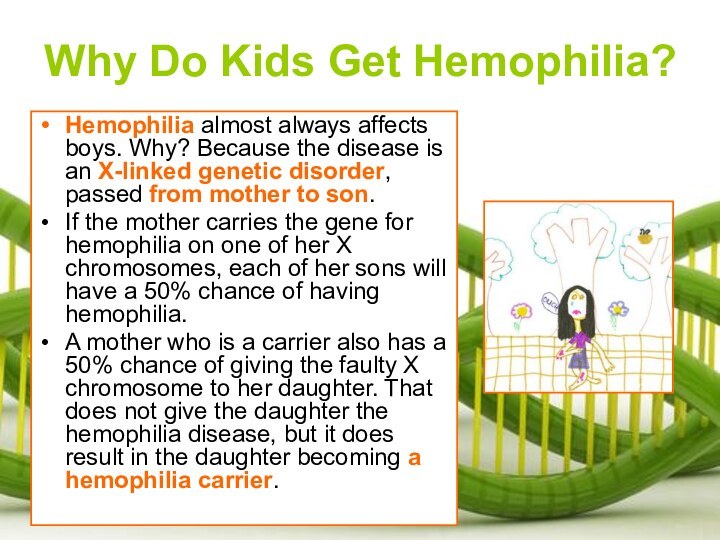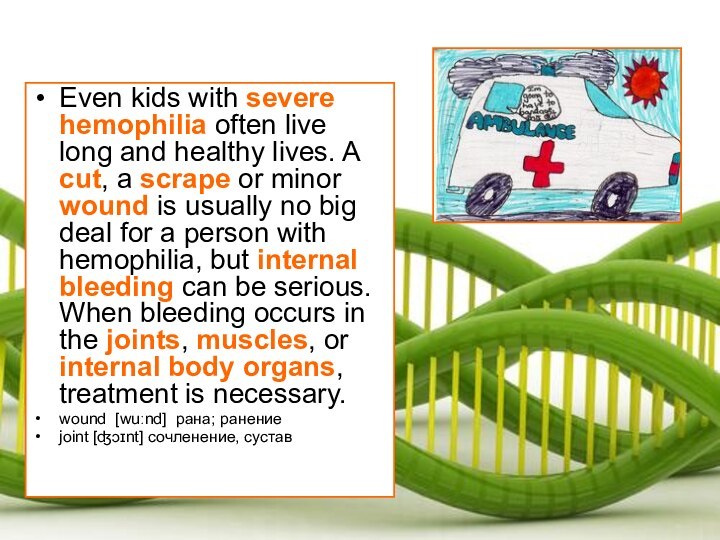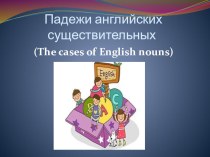up of cells that contain a substance called deoxyribonucleic
acid (DNA).DNA is wrapped together to form structures called chromosomes. Most cells in the human body have 23 pairs of chromosomes, making a total of 46.
Genes are sections or segments of DNA that are carried on the chromosomes and determine specific human characteristics.
cell [sel] – клетка
deoxyribonucleic acid - дезоксирибонуклеиновая кислота, ДНК
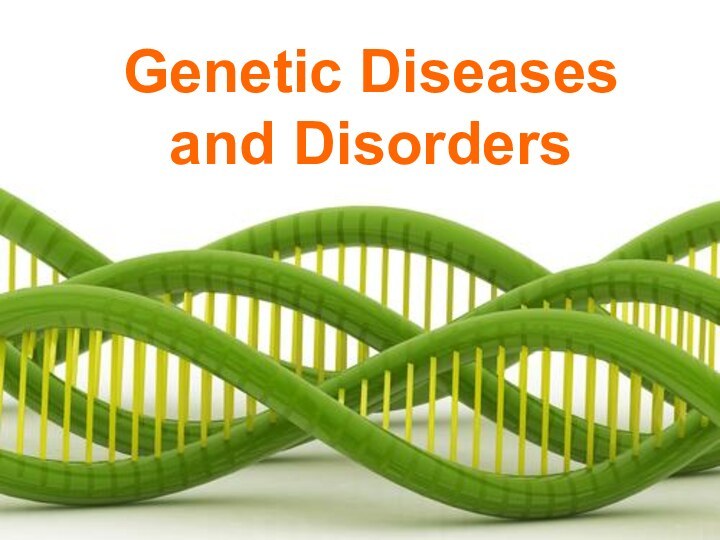
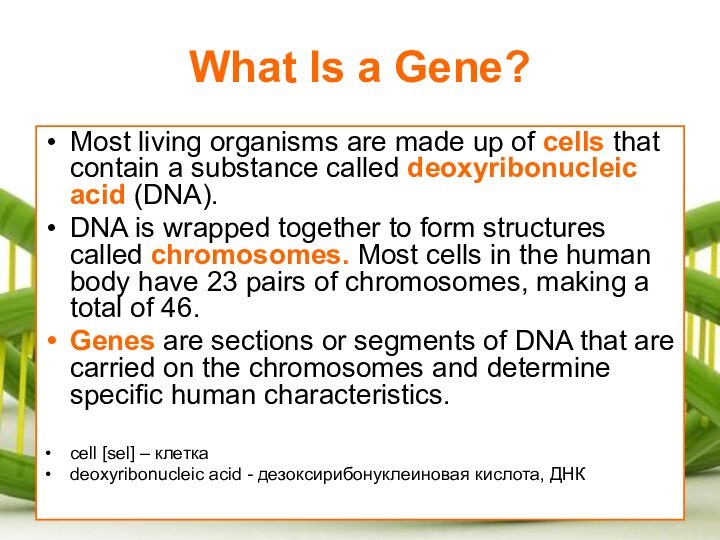
![Genetic Diseases and Disorders What Are Genetic Disorders?Cells can sometimes contain changes or variants in the information in their genes.This is called gene mutation, and it often occurs when cells are aging or have been exposed to certain chemicals or radiation.Fortunately, cells usually recognize these mutations and repair them by themselves.Other times, however, they can cause illnesses.And if the gene mutation exists in egg or sperm cells, children can inherit the mutated gene from their parents. inherit [ɪn'herɪt] - унаследовать, перенять](/img/tmb/11/1079382/7394e55963d540173df67fa149e13b2c-720x.jpg)
![Genetic Diseases and Disorders Researchers have identified more than 4,000 diseases that are caused by genetic variants.On average, people probably carry from 5 to 10 variant or disease genes in their cells.Problems arise when the disease gene is dominant or when the same recessive disease gene is present on both chromosomes in a pair.Problems can also occur when several variant genes interact with each other - or with the environment - to increase susceptibility to diseases.susceptibility [səˌseptə'bɪlətɪ] - восприимчивость](/img/tmb/11/1079382/a8e69008add89d90cada05f3796c3ae5-720x.jpg)
